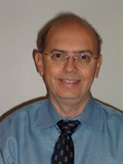Q&A: Andy Stergachis
Pharmacovigilance: a tongue-twister of a word that means keeping tabs on the quality and safety of medicines and vaccines. In the US, this public health work is primarily done by the FDA, academic groups, and pharmaceutical companies. But what happens when a country doesn't have the resources to watch over the medicines given to its citizens? Or when a country gets medicines from foreign pharmaceutical companies that don't commit resources to monitoring their own products?

Andy Stergachis, professor of Global Health and Epidemiology, is also the director of the UW's Global Health Medicines Program. Together, they're looking for ways to ensure the safety of medicines used in countries with limited resources.
Q: (SPH) Why "pharmacovigilance"?
A: (Andy Stergachis) Pharmacovigilance—or monitoring the safety and effectiveness of medicines —is not a new field. The thalidomide birth defects disaster of the early 1960s prompted a world-wide call to monitor medicines for harmful effects that may only appear after a medicine has been used by a large number of people. The data we collect through this monitoring tells us how a medicine performs in the real world—and it can tell us when treatment guidelines and drug labeling need to be changed or when risks outweigh the benefits. The bottom line is patient safety.
Today, this monitoring is widely viewed as a core function of health care systems. But globally, there's a huge variation in how this monitoring is done.
Q: How does the process work?
A: Heparin is a recent example. This medication has been around since the 1930s, used to prevent and treat blood clots. In 2008, the FDA and other US public health authorities received multiple reports of adverse events—even deaths—involving severe allergic reactions. These reports from health care providers are what we call "signals." The FDA determined that contaminated heparin from overseas was to blame for the adverse events and took actions in response to this crisis.
Another example is Vioxx®, which was approved in 1999 for use by patients with arthritis and other chronic inflammatory conditions and taken by more than 80 million people around the world. Data showed that people who took high doses for long periods of time had an increased risk of heart attack and stroke—and the drug was pulled off the market.
Q: If the FDA and other regulators are already on the job, what's driving these new concerns?
A: In the global fight against HIV and AIDS, TB, and malaria, essential medications are increasingly being used in low income countries around the world—countries that have weak monitoring capabilities. By 2010, for instance, more than 6 million people were taking ARVs (antiretroviral drugs) to fight HIV, thanks to the efforts of the Global Fund, PEPFAR, and other donors. If patients have concerns about the safety of these medicines, life-saving public health efforts could be jeopardized.
Q: You write in The Scientist about a new vision for sustainable global monitoring. What are we looking at?
A: One possible option is regional collaborations, where countries work together more closely to systematically collect and interpret data. Another strategy would bring government agencies, international donors, and the private sector together to find sufficient technical and funding resources. Finding new methods for pharmacovigilance is another solution. There will be complications in any strategy, of course, but the health and safety of the world's citizens depends on working together to find an answer.
For more information, check out the Global Health Medicines Program.
